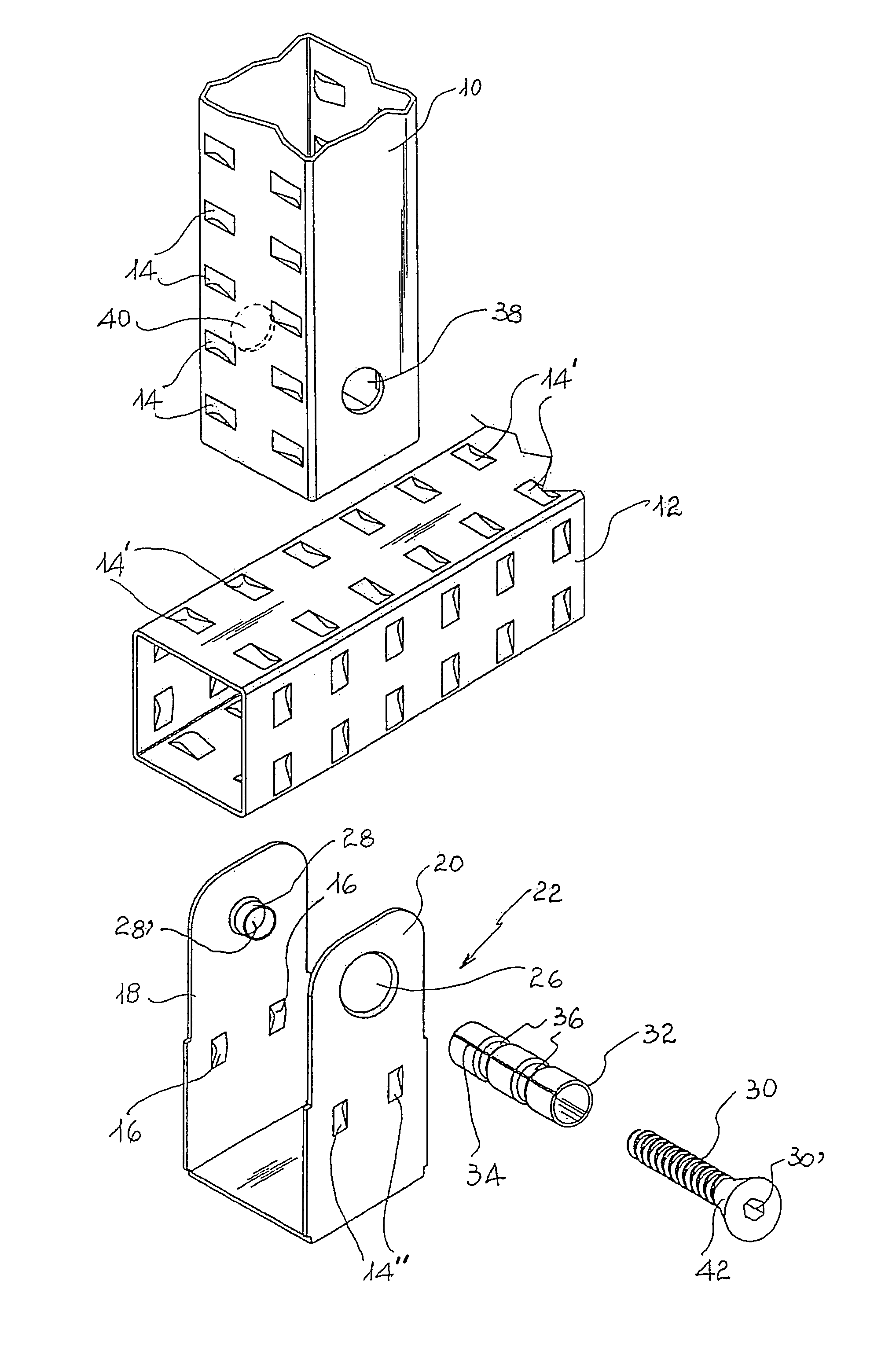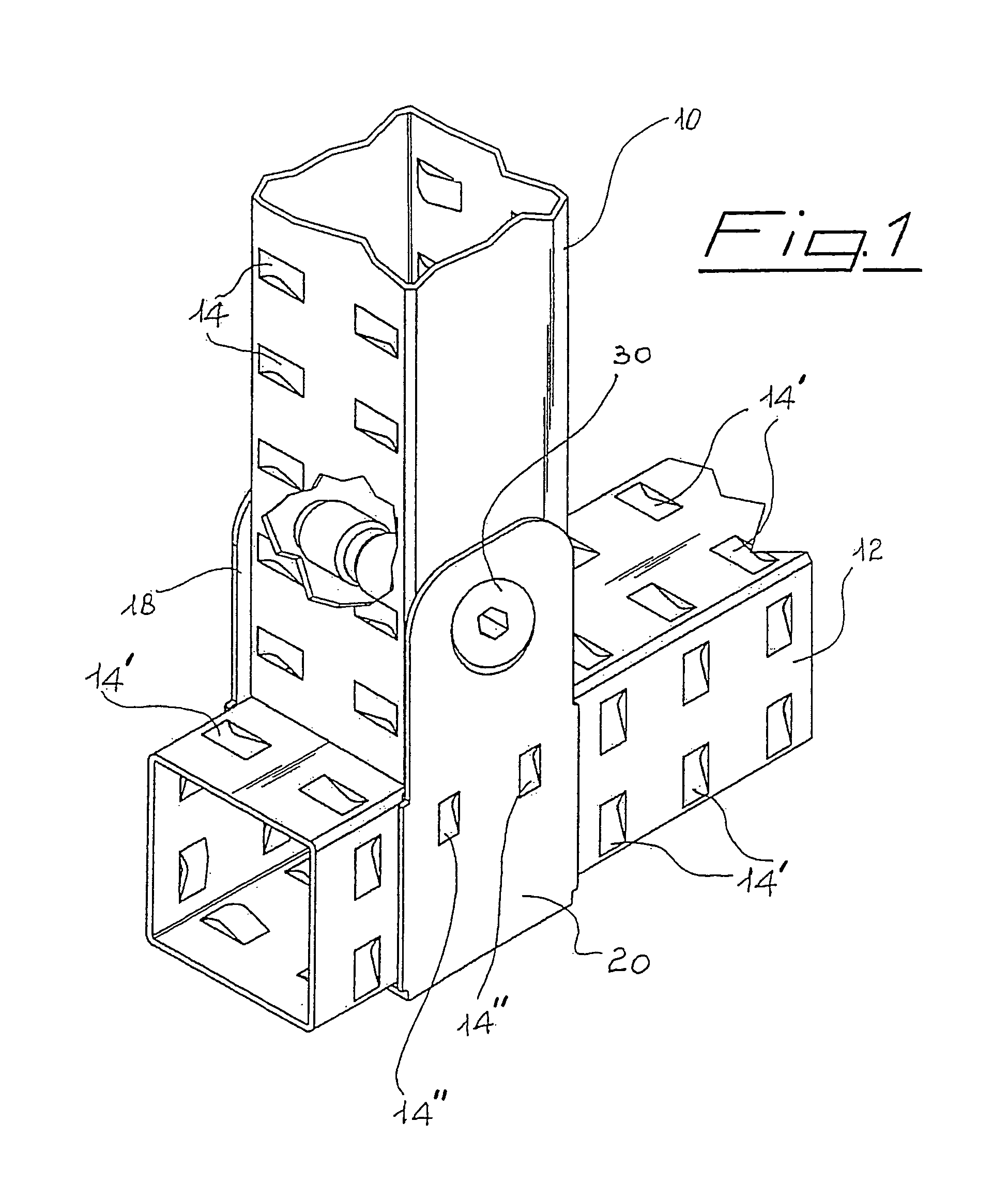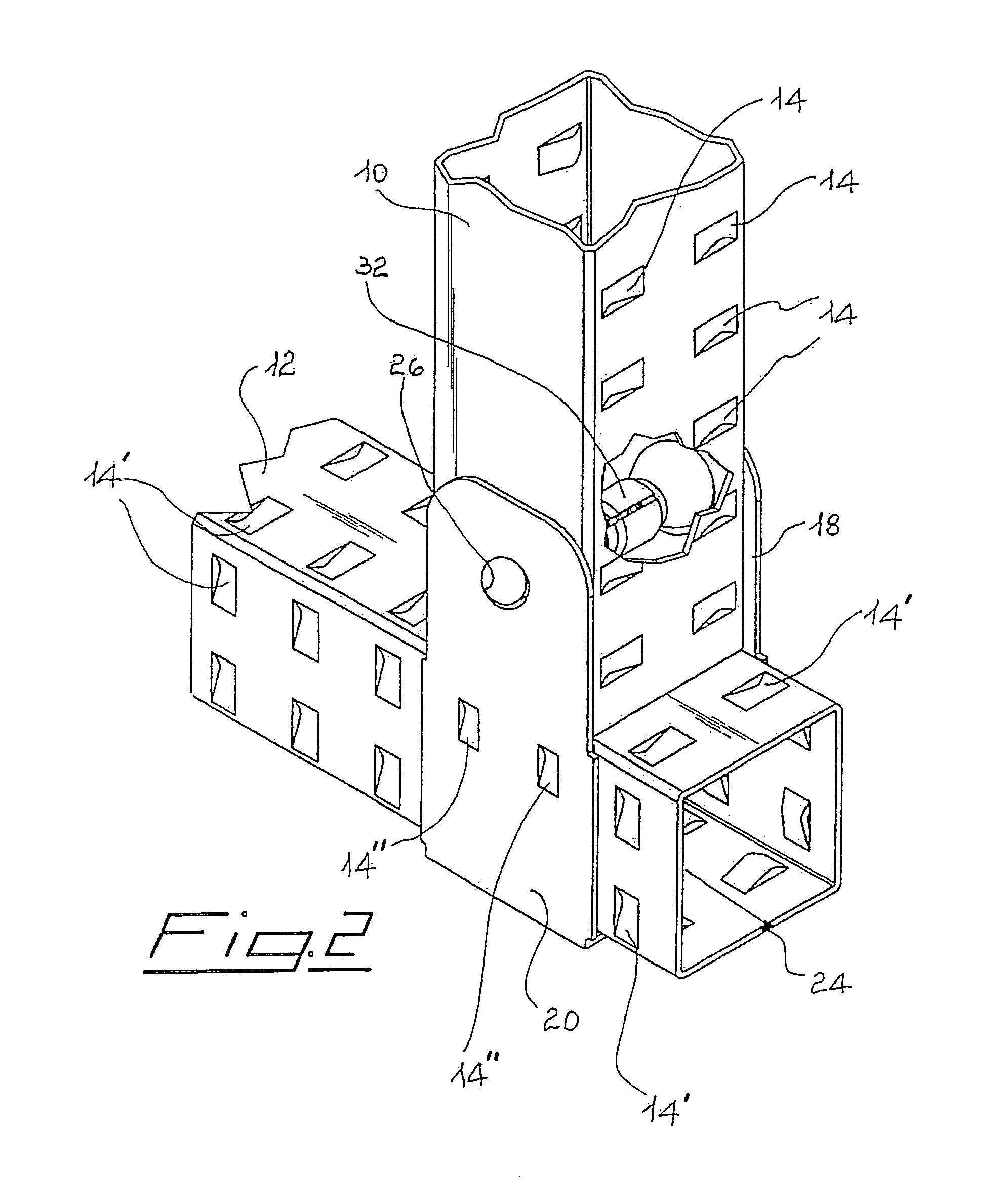Device for the forced locking of two elements oriented orthogonally to one another
- Summary
- Abstract
- Description
- Claims
- Application Information
AI Technical Summary
Benefits of technology
Problems solved by technology
Method used
Image
Examples
Embodiment Construction
[0017]With reference to said figures, the forced locking device of the present invention is applied to two metal tubular elements oriented orthogonally to one another and partly delimited by a “U” shaped band, as described in EP 1,516,559.
[0018]Said tubular elements, respectively indicated with reference numerals 10 and 12, exhibit a quadrangular section and are in fact provided, along the faces that constitute the side surface thereof, with a plurality of shaped recesses 14 and 14′, respectively, wherein complementary projections 16 engage, which develop along the inner faces of the opposite and parallel branches 18, 20 of each “U” shaped band, globally schematised with reference numeral 22 in FIG. 3. The shaped recesses 14, 14′ and projections 16 are obtained by moulding the sheet, prior to the bending thereof, which gives rise to the quadrangular section, and prior to the longitudinal welding of the section bar, schematised with reference numeral 24 in FIG. 2. Substantially, rece...
PUM
 Login to View More
Login to View More Abstract
Description
Claims
Application Information
 Login to View More
Login to View More - R&D
- Intellectual Property
- Life Sciences
- Materials
- Tech Scout
- Unparalleled Data Quality
- Higher Quality Content
- 60% Fewer Hallucinations
Browse by: Latest US Patents, China's latest patents, Technical Efficacy Thesaurus, Application Domain, Technology Topic, Popular Technical Reports.
© 2025 PatSnap. All rights reserved.Legal|Privacy policy|Modern Slavery Act Transparency Statement|Sitemap|About US| Contact US: help@patsnap.com



